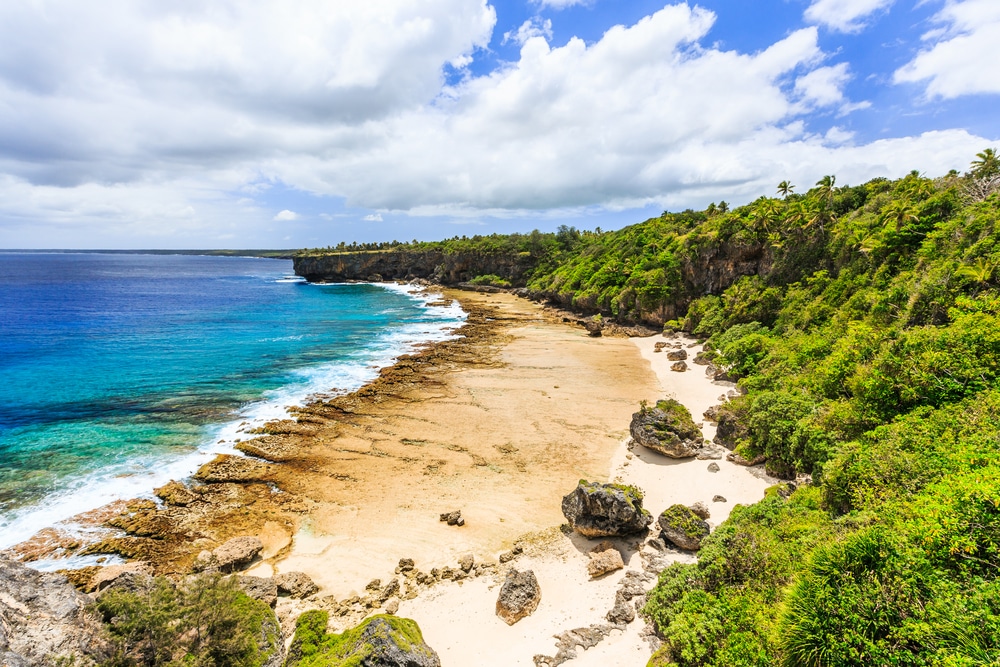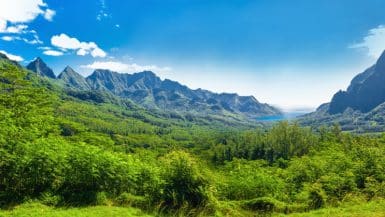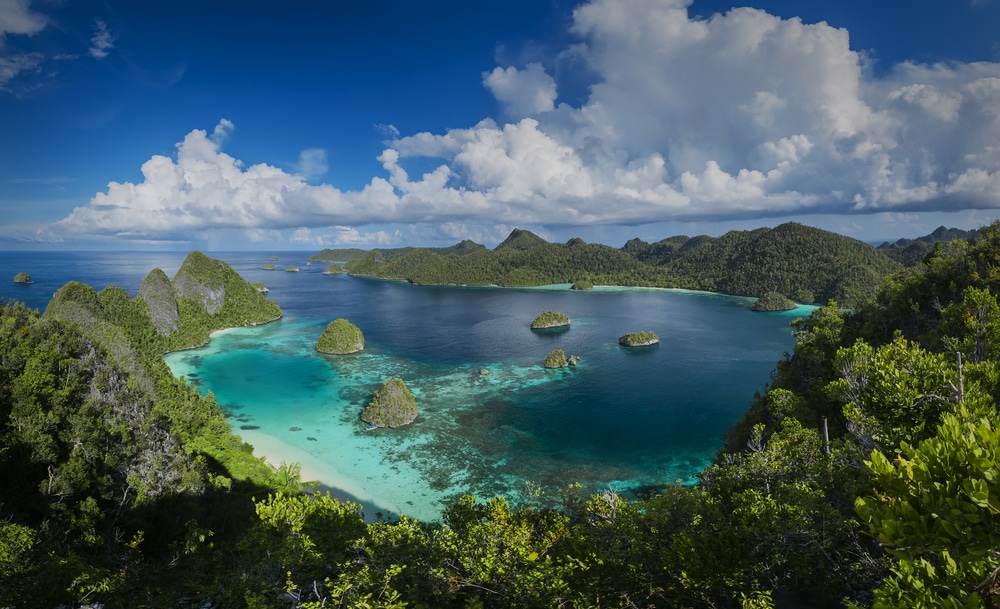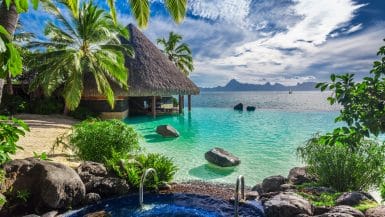Surrounded by turquoise waters, the islands of the Kingdom of Tonga lie like the islands of the blessed in the middle of the Pacific Ocean. The archipelago, which was largely formed by volcanism, belongs to Polynesia and consists of 169 islands, of which only 36 are inhabited. The remaining islands are almost untouched by human hands and are true natural paradises with a unique flora and fauna.
The rare animals and plants are protected in 24 nature reserves – some of which are proclaimed marine protected areas. The next largest island groups, such as the Fiji Islands in the west and the Samoa Islands in the north, are about 600 kilometers away. The tectonic plates below the island state are still in motion and form the 10,000-metre-deep Tonga Trench as a seam.
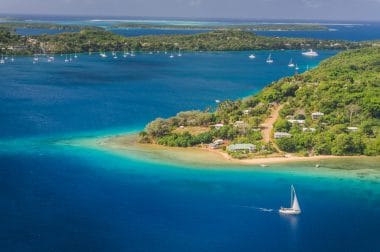
The so-called Ring of Fire, which surrounds almost the entire Pacific Ocean and still keeps some volcanic islands of Tonga active, is also the effect of the plate shifts. The Kingdom of Tonga is the ideal destination for adventurers and active holidaymakers who appreciate unique natural beauty. Here you are far away from any mass tourism and can make your South Seas dreams come true. Tongans are known as friendly people, which is why the archipelago was once called the Friendship Islands.
Island hopping from one paradisiacal island to the next
Accommodation in the Kingdom of Tonga ranges from simple guesthouses to a few luxurious beach resorts. Most of the larger hotel complexes are located on the main island of Tongatapu Island. An economic, cultural and tourist center is the capital Nukuʻalofa on the north coast of Tongatapu.
By the way, the name of the city of 35,000 inhabitants means something like “The Home of Love”. This is also where the King of Tonga has his residence in the wooden Royal Palace. The whitewashed building is considered the smallest royal palace in the world. In addition to the only cinema in the country, there are a few small bars, a large harbour area, several churches and a rugby stadium. Fuaʻamotu International Airport is about 25 kilometers away.
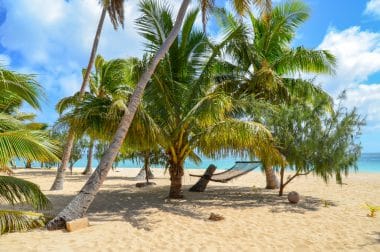
The next largest island in the kingdom is the island of ʻEua with a total of 5,000 inhabitants. The hilly island is covered with dense rainforest and is home to the oldest birch fig in the world. Birch figs are known as the Benjamin tree in European households. Along the coast there are some beautiful sandy beaches and hidden bays. The island of ʻEua is also a popular whale watching post. If you want the pure Robinson Crusoe feeling on holiday, travel to the island of Uoleva, which is only four kilometres long and one and a half kilometres wide. Even the journey with the Douglas DC-3 Skyliner propeller plane, the only aircraft of the royal airline, to Lifuka, which is also a dream island, and the onward journey by motorboat, is an experience in itself. On Uoleva, visitors can expect an idyllic resort with bungalows.
Excursions to the unique natural beauties of Tonga
A large part of the volcanic and coral islands of the Haʻapai archipelago, which belongs to Tonga, is under nature conservation. The area, which is popular with divers, is located directly on the Tonga Trench and offers some of the most beautiful diving spots in the Pacific with its colorful coral reefs. Some of the Haʻapai Islands are inhabited, others are used to grow kava, bananas, vanilla, and tropical fruits, and still others are left to their own devices.
The island of Tofua, for example, was made famous by William Bligh, who had fled here with the mutineers of the Bounty. Later, the Swiss snowboarder Xavier Rosset retired to Tofua for a year. There is also a national park on the main island of Tongatapu, which was formed from coral limestone with its picturesque lagoons, mangrove forests and bird nesting sites. On trekking and hiking tours, here and there you will still encounter traces of the earliest settlement, which dates back to 900 BC.
Ceramic remains of the so-called Lapita culture were found in the protected Fangaʻuta Lagoon – but these come from the Solomon Islands, 2,000 kilometers away, and prove the far-reaching trade relations between the peoples of that time. A visit to the Tongan Wildlife Centre is also interesting, which is home to mainly endangered bird species, including the Malau, which lays its eggs in warm volcanic soil so that the chicks hatch faster.
Land & People in the Kingdom of Tonga
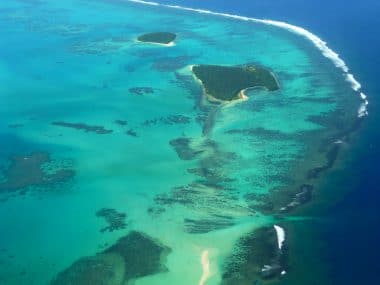
About 98 percent of the inhabitants in the Kingdom of Tonga are Polynesian, the remaining inhabitants come mainly from Europe, China and India. The early Lapita culture is considered the cradle of today’s Polynesian culture. The population lives very simply, but is no less cheerful for that. This can be seen in the numerous traditional festivities that are celebrated in the towns and villages of the islands throughout the year.
The average abundance of the Tongans, as the locals are called, also shows that the Kingdom of Tonga also loves culinary delights. Seafood in all variations is of course at the top of the menu. Raw fish marinated with lemon juice, fried squid in coconut sauce, boiled lobster and mussels are just a small excerpt. But suckling pig, meat cooked in taro leaves and a variety of tropical fruits are also served.
Many dishes are still traditionally prepared in an earth oven. The Kingdom of Tonga is a land of milk and honey for lovers of exotic fruits, because they grow everywhere along the way and of course taste more delicious than from the supermarket at home. The fruits are used to conjure up delicious mixed drinks. But even those who prefer a spicy barley juice will not miss out in the Kingdom of Tonga, because the Royal Lager is brewed on Tongatapu. For European taste buds, the drink kava, which is popular throughout South Sea culture, takes some getting used to. The drink, made from the root of a pepper plant, is often served as a welcome.

